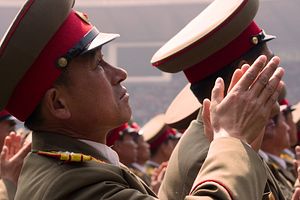North Korea is able to place a nuclear warhead on a mid-range missile, an unnamed South Korean official has claimed.
The government official, who spoke to local reporters Tuesday on condition of anonymity, said Pyongyang had gained the ability to attach a warhead to a Rodong missile. This would represent a major advance of North Korea’s nuclear and missile abilities, bringing South Korea, most of Japan, and parts of China and Russia within range of a nuclear strike.
The secrecy of North Korea’s nuclear and missile programs makes it impossible to independently confirm the claim. The Ministry of National Defense repeated its earlier position that North Korea had yet to master the technology, Reuters reported, while the Pentagon said it didn’t “necessarily” share the assessment.
Analysts that spoke to The Diplomat, however, said the claim was at least credible.
“The Rodong missile has always been classified as ‘nuclear capable.’ In fact, the Pakistani Ghauri missile is identical and carries a nuclear payload,” said Melissa Hanham, a senior research associate at the James Martin Center for Nonproliferation Studies.
Nathan Hunt, an analyst at 38 North, said that North Korea has had the opportunity to develop its capabilities through its repeated nuclear and missile tests.
“This is not five or eight years ago. [The] DPRK (Democratic People’s Republic of Korea — North Korea’s official name) has been running an active R&D program of working both on its missiles between tests, and expanding its production and nuclear program and putting a large amount of resources into doing so,” Hunt said. “Its researchers in this time have had ample time to study data from between nuke tests and to put methods into practice.”
In January, Pyongyang carried out its fourth nuclear test, which it claimed was a hydrogen bomb. The next month it launched a rocket to put a satellite into space in a move widely viewed as a covert test of ballistic missile technology.
Even if true, Pyongyang’s latest advancement would be of limited use in war without further developments in how it fuels its missile arsenal.
“The main thing that will limit DPRK ability to make such developments a true edge in any potential conflict is that the majority of their missiles are liquid-fueled which means before firing they would be required to be moved and fueled, increasing the chance that such launchers’ movement might be spotted and might be taken out prior to being fired,” said Hunt.
“This is why solid state missiles are something DPRK is pushing on developing and they want the world to know they are developing. If DPRK can field a solid-fueled ballistic missile, then missiles could be moved out and fired with little to no warning from storage.”

































